Teiyu Goto: The Unsung Genius Behind the PlayStation
Learning about Sony’s enigmatic designer in the least expected of places

There’s a little pub in Belfast, nestled within a dimly lit alleyway. It’s sandwiched between a rundown shop and a small café. The grubby exterior looks especially grim on a typical, rain-swept day in county Antrim. Sure, there are people venturing in, but they’re few and far between and almost certainly locals. On Wednesdays however, unfamiliar faces pack themselves into the medieval-like tavern walls. The room comes alive, filled with the clinking of glasses, laughter, and general alcohol-fuelled merriment.
Why Wednesday? Wednesday night is quiz night. The lure of cheap pints and a £50 Amazon voucher for the winning team is, apparently, too much to pass up.
I attended a pub quiz here before the pandemic changed everyone's plans. That night, the questions were fairly typical. Mostly general knowledge with the occasional specialised topic. Nothing too difficult. The optimism among my friends and I felt was palpable. We felt like we were doing well. The more alcohol we consumed, the more our confidence grew — just like in video games!
“Okay, next question folks. Can you list three famous industrial designers from around the world?”
I puffed my cheeks up, exhaled, and glanced around the table worried. At best, we were positive of one such person - Jony Ive, the former chief of design at Apple - an accomplished man responsible for design hits such as the iPod, iPhone, iMac, and PowerMac to name a few. A bit of a rockstar, and a quasi-household name, we suspect other teams knew of Mr. Ive’s work too.
Nevertheless, we searched deep but came up short. We couldn’t think of another one, let alone two. As a designer, this pained me — I should have known better.

Suddenly, a friend excitedly half-whispered, half-shouted “That Dyson fella! What’s his first name? John? John Dyson?” Confidently wrong, we hastily wrote it down. Eventually, the host read the answers back to the room. I simultaneously sat forward in my seat while trying to look like everything was under control.
“Jony Ive. Marco Zanuso. Nolen Niu. James Dyson…”
1 out of 3 ain’t bad.
The quiz master not only continued a long list of names but went on to explain why each industrial designer was famous in their respective field. Imagine my surprise when one of the names read out was Teiyu Goto, a man as involved in the success of the PlayStation brand as Ken Kutaragi or Kaz Harai. Yet, at the time, he was a complete mystery to me. Who was this enigmatic designer, and as a designer and PlayStation gamer, how did I have this gap in my knowledge?
With my mind officially blown and curiosity piqued, I wanted to know what else Mr. Goto designed while at Sony. As it turns out, he was just as prolific as Jony Ive was at Apple.
Goto's 30-year journey
Goto-san began his tenure with Sony in April 1977, working on a range of products that included digital clock radios, stereo radio cassette players, and consumer video cameras. Even at this early point in his career, Goto established himself as a key player within the team. His expertise enabled Sony to continuously innovate in the audio-visual industry, especially with the release of flagship products such as the Kirara Basso — a large, imposing, flat-screen TV with an earthquake inducing sound-system, hence the name KIRARA BASSO. Cutting edge stuff for the late ‘80s and early ‘90s, and a design that is still beautiful, particularly if you’re nostalgic for when giant CRT TVs ruled supreme. This range of products no doubt demonstrated that Goto was a capable industrial designer. They’re smaller, Japanese-centric successes that will likely remain a footnote in an illustrious career, but they establish an interesting backdrop to a rather reserved designer.
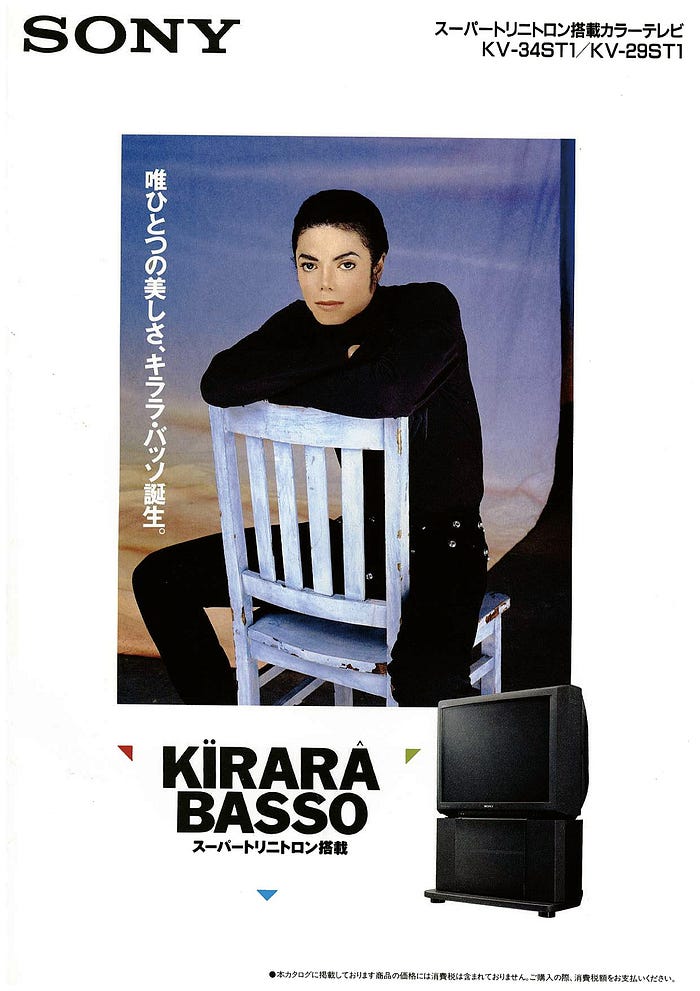
Of course, the PlayStation would become a global phenomenon. Goto was about to put his design into the hands of millions of people around the world. Literally.

Birth of the PlayStation
Design is an iterative process, so it’s no surprise to read that Goto created a number of different shell designs, quickly assembled and shared with teams throughout Sony. There was no great difficulty in selecting what we now know as the original PlayStation, as shown above. No office politics, no bureaucracy — a rather painless process that everyone seemed to agree upon.
Too good to be true? Almost certainly.
The now-iconic controller was an entirely different matter, with Goto fighting tooth and nail to justify his preferred design to executives.
“The console’s design was ultimately left up to Goto, who said that while many looks were considered, in the end the simpler design won out, and the decision to go with it was fairly swift. However, the fight for the look of the controllers was another story.”
Famitsu
The upper echelons of Sony wanted to mimic Nintendo’s controller design, with its “flat” paddle style and lack of grips. Deemed too risky, the grips we now take for granted on more modern controllers were removed altogether and Goto would return to the drawing board once again to design an alternative. Many alternatives, actually.
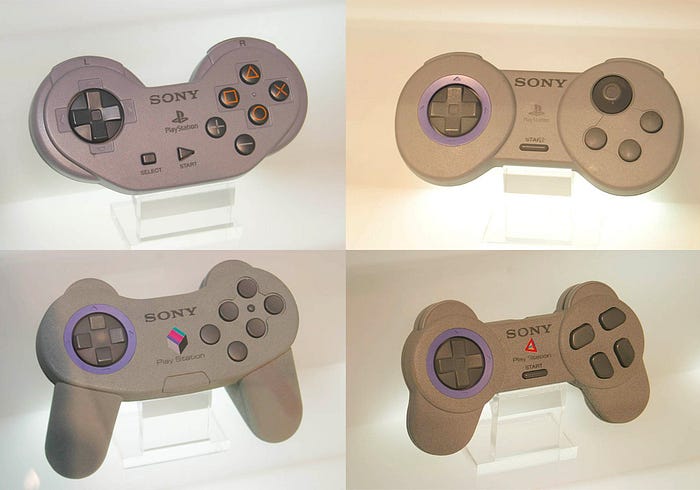
Notice not only the different controller designs but the different logo usage too. Only the top two controllers show the familiar PlayStation logo, which hasn’t changed at all in 25 years. Meanwhile, the bottom two controllers depict entirely different logo usage — suggesting the design process was entirely fluid, and ultimately, iterative until all teams were in agreement.
Thankfully, after showing the flatter design to the same management that rejected the initial grip design, Goto found vindication — the grips would stay. Thank goodness. The design process was more incremental now, with smaller additional tweaks needed to perfect the final design as much as possible. Ken Kutaragi, who worked alongside Goto, suggested that the final design process was very granular.
“We had to decide on the weight of the buttons and the pad itself. We adjusted the weights one gram at a time and eventually we found the correct balance…”
Ken Kutaragi

The final design was released alongside the original PlayStation, and immediately recognised as a watershed moment in controller design, a genuine paradigm shift in controller ergonomics. In design circles, surely as iconic as the iPod, VW Beetle or the Eames moulded plastic seat. Other console manufacturers took note. Controllers from this point onward had changed forever, with Sony continuing to refine the above further with the Analogue Controller and Dual Shock.

What about those buttons? Why didn’t Goto just use letters or numbers, rather than shapes? He sought something more symbolic, something unique, and a step away from what had been done countless times before.
“Goto explained that the triangle symbol represented a viewpoint, while square referred to a piece of paper, and the circle and X buttons represented yes or no decisions.”
Famitsu
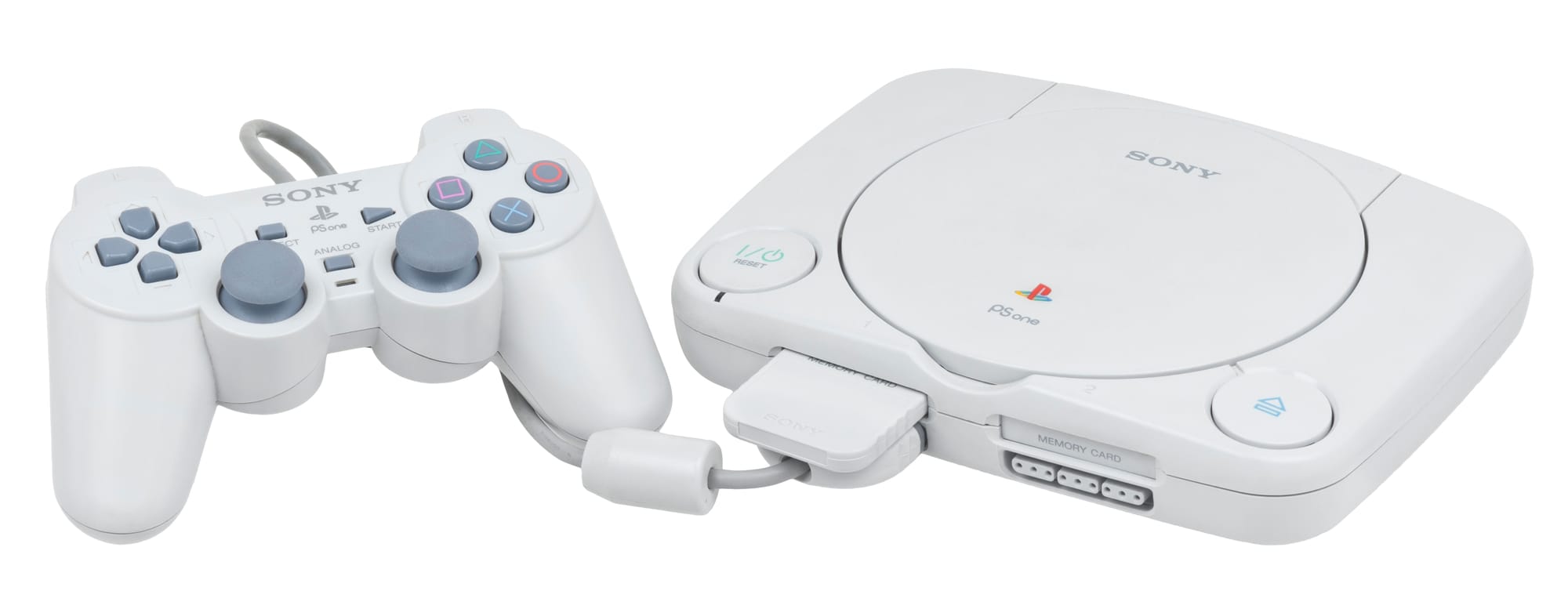
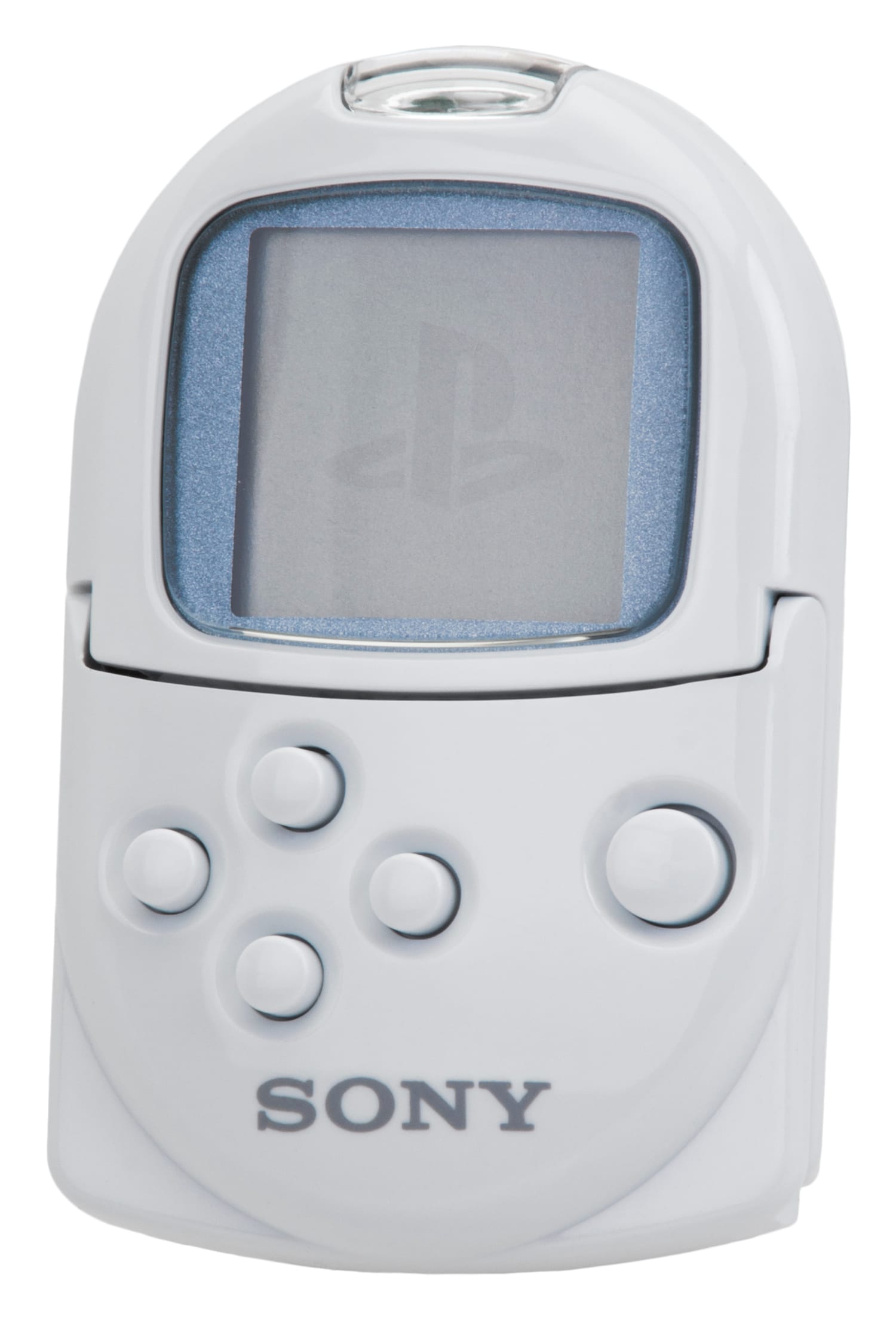
Goto refined the design of the PlayStation with the PSOne (left). He also designed the dinky PocketStation (right). Source: Wikimedia Commons / Evan Amos.
Goto would continue to work on other projects, albeit, smaller in comparison to the work carried out on the PlayStation. He would design the shell, interface, and logo for the PocketStation, a terribly cute Dreamcast VMU ripoff that was actually quite popular in Japan, as well as smaller and further refined PSOne. Fun fact: Goto also designed the famous VAIO logo for Sony’s line up of personal computers and notebooks, around the mid-90s.
In my opinion, the best was yet to come, as a true magnum opus was around the corner. The PlayStation 2 was on its way, and everyone from your aunt to your delivery person knew it.
Round two. Fight!
If the original PlayStation was designed to be as unassuming as possible, the PlayStation 2 was the antithesis of that design concept. Black, monolithic, almost to the point of intimidating but nonetheless intriguing. A mysterious, otherworldly piece of hardware that “recalled the vastness of space”, where switching the machine on felt like firing up an interdimensional teleportation device with “unlimited potential”.
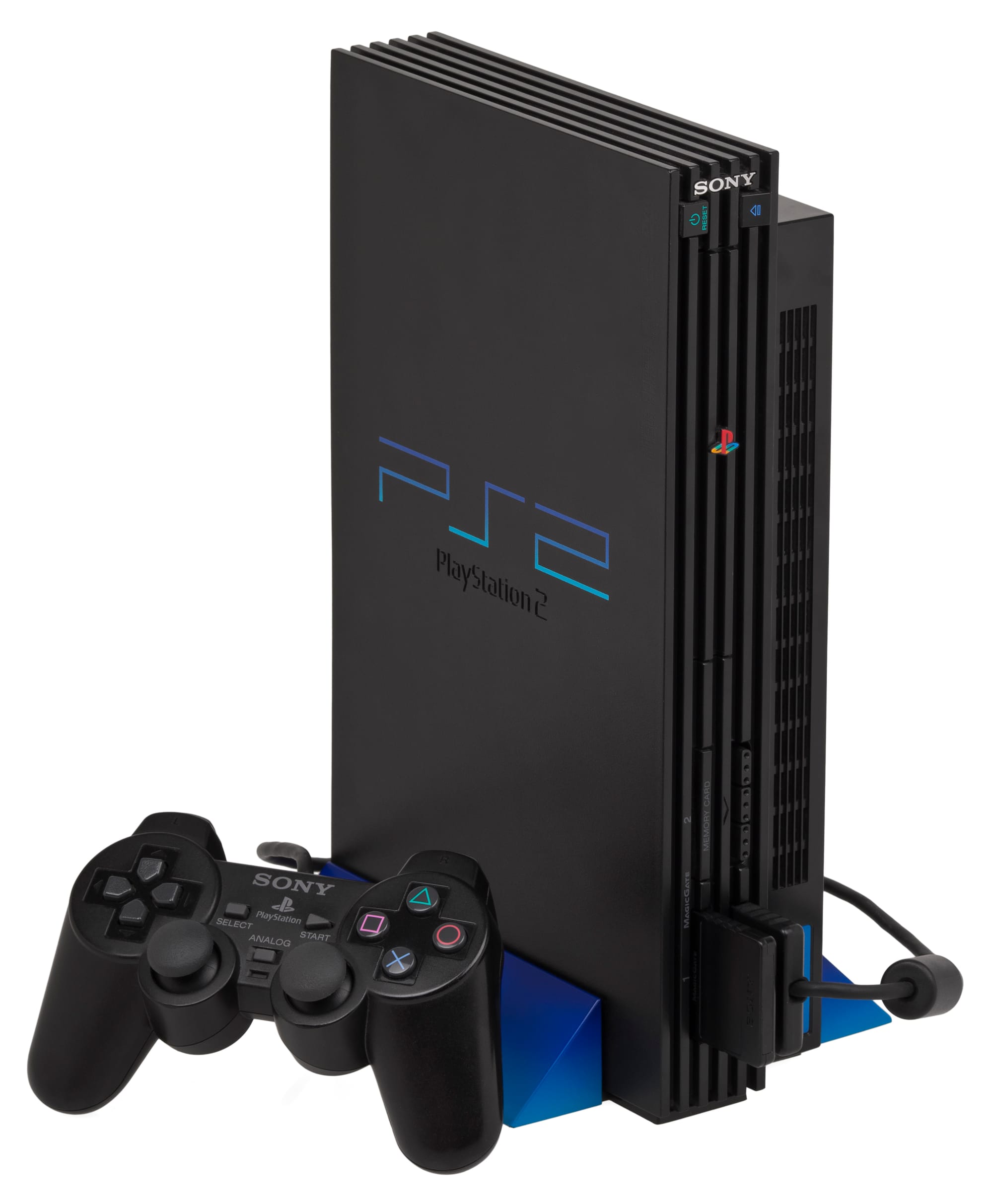
“A jet-black case, recalling the vastness of space, suggested the feeling of unlimited potential. The blue gradation of the stand was in turn inspired by the earth.”
Sony
You couldn’t help but immediately be drawn into the surreal start-up sequence. It felt like an event, and if you were lucky enough to have a PlayStation 2 at launch, then you were invited. Interdimensional teleportation device activated, traverse through the towers, the lights, and the blue nebulous gas to unfamiliar stories and amazing adventures.
The hardware and software of the system working together harmoniously to create an entirely new experience.
“Kutaragi-san briefed us with the concept that was beyond our image, like a monolith floating in space with the earth in the background. I used the perfect 4th chords with stable harmony to express simple strength and the image of landing somewhere from space.”
Takafumi Fujisawa, Sound Designer
Sony’s marketing team even capitalised on the ambiguity of the PlayStation 2 design, running a series of ads in the UK titled The Third Place. Directed by the all-around king of weirdness David Lynch, I sure as hell didn’t know what this meant as a kid, but I was whipped up into a furore and completely bought the hype.
Not everyone did, however.
At the time of the PlayStation 2 release, I distinctly remember it being the subject of criticism too. One person's black box of alien ambiguity is another person's tiny air-conditioning unit. No doubt not everyone was pleased, but design is subjective, and a designer must make subjective choices. Goto, with complete creative freedom due to his prior work, did so.
There were also some unflattering comparisons to a rather obscure computer called the Atari Falcon 030 MICROBOX. A rather typical design for a computer at the time, rectangular in shape and beige in colour. The similarities are striking, however. The MICROBOX came with a stand that would allow the unit to stand vertically, as did the PlayStation 2. The general form factor was very similar too, with near-identical “gutters” running down, from top to bottom.
I think ultimately however, the similarities end there and would personally put this down to coincidence, but I can’t. Why? Because the Falcon 030 MICROBOX was referenced in PlayStation 2 patient documentation by Sony. More than a coincidence then, and proof that inspiration can strike in even the oddest of places.
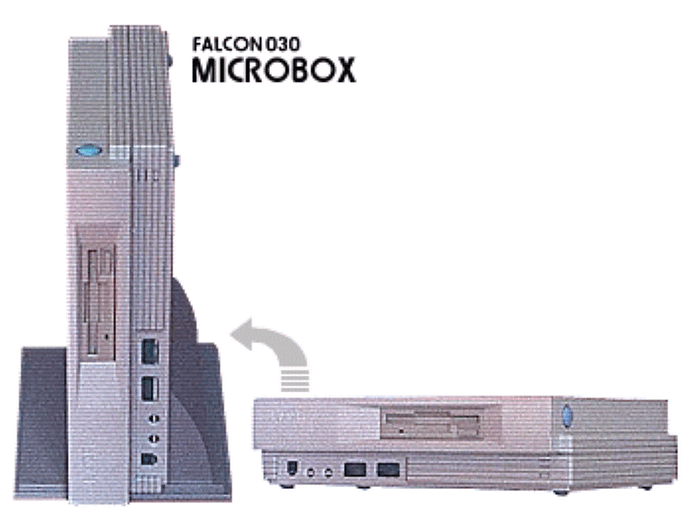
As the famous Canadian designer, Bruce Mau would say, “Imitate. Don’t be shy about it. Try to get as close as you can. You’ll never get all the way, and the separation might be truly remarkable.”
And the PlayStation 2 was truly remarkable indeed.
Future shock
Realising they were on to a winning formula with the controller, nothing changed with the Dual Shock 2. The form factor was identical and gamers were so accustomed to the layout that the continued use of this design was overwhelmingly positive. One minor difference in functionality was that of pressure-sensitive buttons — hold the square button to raise your gun in Metal Gear Solid 2, and release it slowly to have Snake lower his gun at the same pace. A minor innovation, but I don’t remember it being used outside of that game.
It’s worth pointing out that if you hold an original PlayStation controller next to the latest PS5 incarnation, the Dual Sense, at first glance they would appear to be very different. However, on closer inspection, the DNA is there and the ancestral line is evident, right back to 1995.
Goto would produce further refinements, and Sony would eventually release the diminutive, and overall less intimidating, Slimline PlayStation 2. The design language of this system was entirely different, and what it lacked in conceptual abstraction, it made up for in utilitarian cuteness. At this point, Sony was demonstrating their incredible ability to take existing tech, and shrink the form factor considerably — a legacy that continues to this day.

What next for Goto? He would move onto his third major and final project for Sony before moving on to set up his own company, Teiyu Goto, Inc. The PlayStation 3 was probably the most subjective of all designs, with plenty of meme mockery online due to its curvaceous nature, especially in comparison to Goto’s previous, more angular designs.
But I believe that’s another story for another day — and I’d love to share my thoughts on that in the future.
As for now, let’s just raise our glasses to a great Japanese designer, a man whose name isn’t as well known as other industrial designers, and thank him for his contribution. His hard work and consistent approach in thinking of us, gamers, has led to real advancements in the industry, and we’re all benefactors of that.
In some ways, my fascination with design started when I became a PlayStation gamer, and through the products Goto designed, who knows, it’s possible that fascination led to me becoming a designer myself.
後藤さん、ありがとうございました!
Oh, and if you’re wondering if we won the pub quiz that night? We didn’t. I wasn’t disappointed however, I learned something new and had fun doing it. There’s always going to be another Wednesday, and who knows what I might learn?